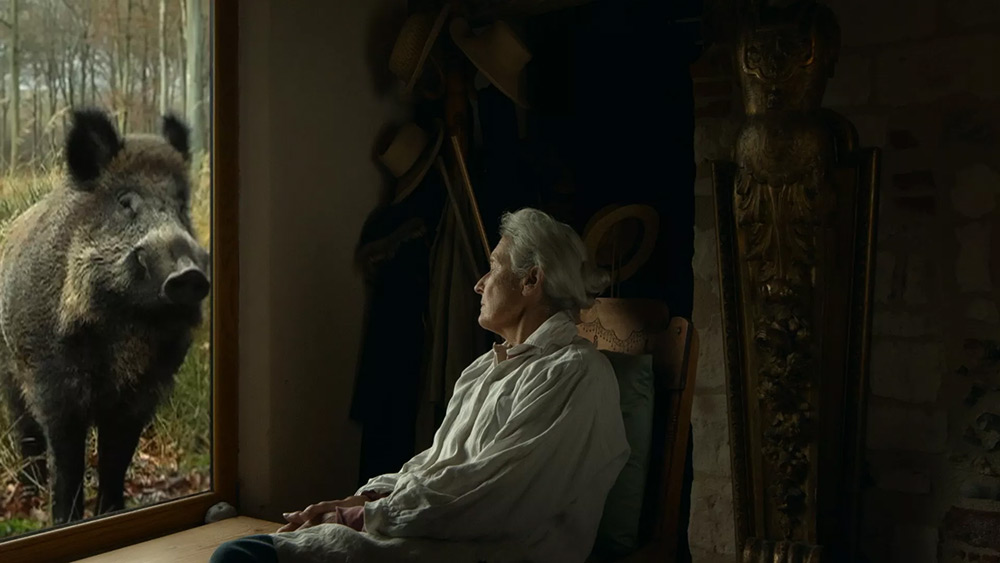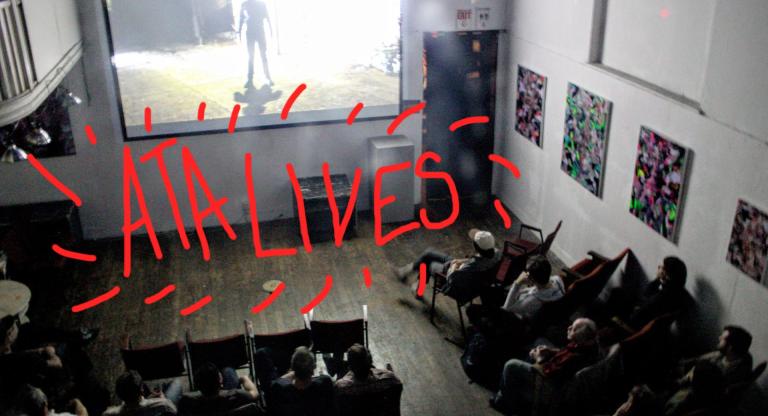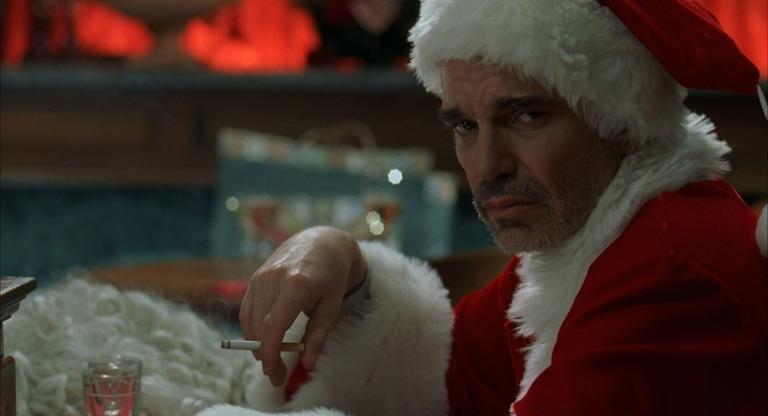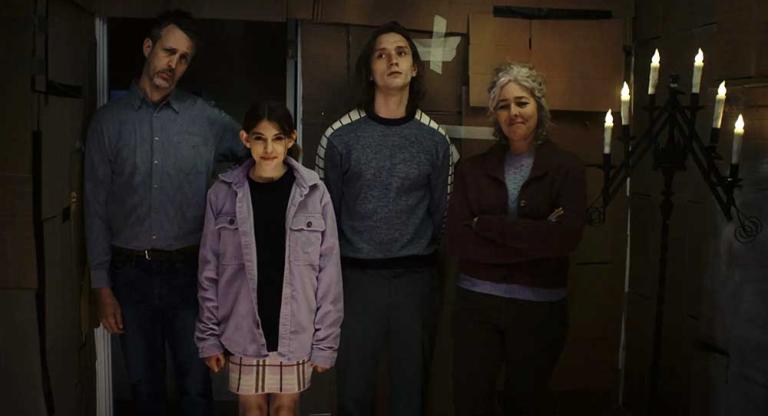Agricultural worker and filmmaker Pierre Creton has made 37 films since 1992, mostly shot in and around his home in the village of Vattetot-sur-Mer, in the Pays-de-Caux region of Normandy. BAM is now hosting the first U.S. retrospective of his unusual body of work, in which he documents, restages, and subtly fictionalizes his bucolic life and the community he has cultivated. The selected films, dating to 2005, encompass his ongoing collaboration with his partner, the sculptor Vincent Barré. Included in the six features is Go, Toto! (2017), a film that examines aging, childhood memories, and relationships between humans and animals.
At the film’s start, Creton’s longtime gardening client, Madeleine, has adopted an orphaned wild boar, Toto (in French, the title is a pun: Vattetot becomes Va, Toto!). On digital video, Creton documents their interactions, and presents the footage in a mesmerizing split screen. In a voice-over, Creton reflects on Madeleine’s earlier reluctance to be filmed, which changed with the arrival of Toto. “I realized she thought the cinema was an irrelevance compared to the poetic life she lived, which combined rigour with neglect,” says Creton. Madeleine’s stubbornness appears in her defiance of local laws and her insistence on bottle-feeding the maturing boar. Creton’s voice-over alternates with Madeleine’s, and she shares her experience growing up in a culture of hunting. “Toto is like the survivor of all the hunts I haven’t been able to prevent.”
These scenes crosscut with two parallel narratives. In the first, Creton is hired by a cattle farmer who needs help waking from his deep sleep. His C-PAP machine induces vivid dreams, and he recounts these to a patient Creton as they tend to the farm. In the second, Barré travels to Northern India to complete a survey of colonial architecture. There, he rekindles a boyhood fixation on monkeys, equal parts fear and sexual desire. In one long take, Barré sleeps in his hotel room as Creton records a macaque that climbs through an open window (according to Creton and Barré, they lured the monkey with a piece of bread, and hoped it might jump on the bed). In all of Creton’s films, the camera often lingers on the movements of animals, and he currently lives with chickens, a rooster (“the king”), a cat, a dog, and a donkey named Gilbert. He has said, “To film animals, it is always much more beautiful when you love them.”
Creton has long admired the work of Jean-Marie Straub and Danièle Huillet, another collaborative couple. Their influence is felt in his tableau shots of the natural landscape, elliptical narratives, and digressive voice-overs. As with Straub-Huillet, the patient viewer is richly rewarded. The film’s three parts may sound disjoined, but each encounter gives the others room to breathe. They coincide because they happened that way in life, and they fit together because each centers on modes of care and companionship that exceed typical familial ties. Her love for Toto brings Madeleine into a close friendship with another older woman, a local farmer named Monette, and together with Creton they tend to Madeleine’s gardens. When Barré returns from India at the end of the film, he and Creton reunite in a gay bathhouse and embrace, enclosed by other naked, worn bodies.
Go, Toto! screens tonight, June 24, at BAM as part of the series “Erotic Nature: The Films of Pierre Creton & Vincent Barré.”



